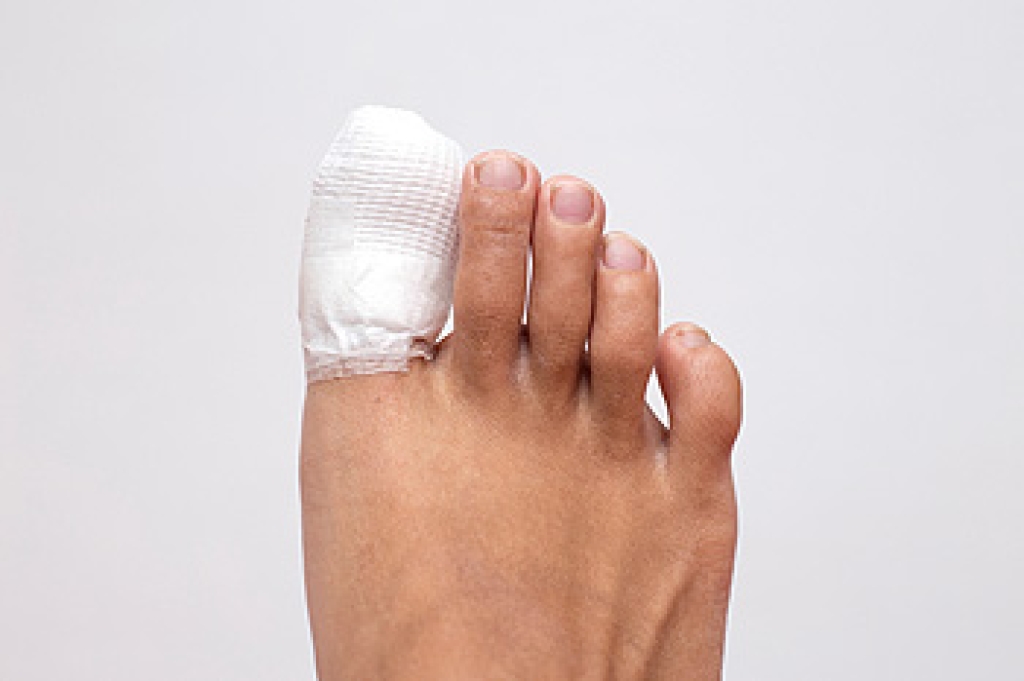Sore Feet and Exercise Bikes

Riding an exercise bike has the benefit of burning calories, getting in shape, and improving cardiovascular health. This type of exercise is low-impact and puts less strain and pressure on bones and joints. However, it does have the potential to cause foot pain. By positioning the feet properly and riding the bike at a moderate pace, this pain can be avoided and even help in recovering from foot injuries. Wearing well-fitting, properly ventilated footwear with hard soles can provide cushioning of the foot from pressure from the pedal, as well as prevent overheating. Riding in a gear and with resistance that is appropriate for one’s fitness level will help manage pressure on the feet as well. The feet should be positioned so that the pedals are under the balls of the feet for a good neutral starting position. Depending on the length of a person’s legs, sliding the feet backward or forward can help make the ride more comfortable. An exercise bike can be good for recuperating from a foot injury too. A recumbent exercise bike is particularly good for rehabilitation. If you want to know more about preventing foot pain while riding an exercise bike or using this machine for rehabilitating an unrelated foot injury, contact a chiropodist for further advice.
Injuries to the foot and ankle are very common among athletes. If you have experienced an injury, please consult with one of the chiropodists from The Footcare Centre. Our chiropodists will assess your condition and provide you with quality foot and ankle treatment.
Common Injuries Among Athletes:
- Achilles tendon injuries
- Ankle strains or sprains
- Plantar fasciitis
- Fractures
- Turf toe
- Joint dislocations
- Sever’s disease
- Morton’s neuroma
Symptoms
Symptoms will depend on the cause and severity of the injury. Common symptoms for a foot or ankle injury include pain, swelling, tenderness, bruising, a reduced range of motion, and difficulty bearing weight or walking on the affected foot or ankle.
Diagnosis
Sports injuries are typically diagnosed after carefully examining the affected foot or ankle. This includes moving the injured area to test its range of motion. Medical history will need to be provided, as well as detailed information about how the injury occurred. Imaging studies, such as X-rays or MRIs, may be used to confirm or rule out certain diagnoses.
Treatment
Just like symptoms, treatment will depend on the type of injury and its severity. Initial treatment for many sports injuries is aimed at controlling inflammation and promoting the healing response. The acronym R.I.C.E is a helpful guide to implement for most acute injuries. This method involves resting, icing, compressing, and elevating the affected foot or ankle. In addition, anti-inflammatory medications may be administered and orthotic devices may be prescribed. For more severe injuries, surgery may be required. Lastly, rehabilitation or physical therapy may be needed to gain full functionality in the afflicted area.
If you have any questions, please feel free to contact our office located in . We offer the newest diagnostic and treatment technologies for all your foot care needs.
How Are Broken Toes Detected?

Pain is often the first sign your toe may be broken. A broken toe can be severe or mild, and there is generally bruising and swelling as well. The toe may break in one or more places, and may look displaced if it is severe. A popping sound may be heard, and it is difficult, if not impossible, to walk. A broken toe can happen as a result of dropping a heavy object on it, or from stubbing your toe on a piece of furniture. An X-ray is the most effective diagnostic test that can be performed, and this can determine the severity of the break. Mild fractures may be treated by using the buddy taping method. This is done by taping the affected toe to the toe next to it, and this is often successful in providing the necessary stability as the healing process occurs. It is important to take proper measures when healing from a broken toe, which may possibly prevent osteoarthritis from developing. If you believe you have a mild or severe toe break, it is strongly advised that you speak to a chiropodist as quickly as possible who can offer you correct treatment options.
A broken toe typically occurs following either a sudden, traumatic injury, like dropping a heavy piece of furniture on the toe. The impact causes the bone to fracture and produces a variety of painful symptoms. If you suspect that you’ve broken your toe, please consult with one of the chiropodists from The Footcare Centre. Our chiropodists can help you maintain the health of your lower limbs and your mobility.
Symptoms
- Throbbing pain
- Swelling
- Bruising
- Cracking sound at the time of injury
- Difficulty bearing weight on the toe
- Difficulty walking
- Toe resting at an unnatural angle
Diagnosis
Your chiropodist can diagnose a broken toe through physical examination and imaging studies, such as X-rays.
Treatment
The main goals of treatment are to ensure that the bone heals properly, as a toe fracture that doesn’t heal properly can lead to osteoarthritis. You will typically need to rest the affected toe. You may be prescribed a splint to immobilize the toe while it heals. Icing the affected toe and taking over-the-counter medications can help reduce pain. In cases of severe fractures, surgery may be necessary to reset the broken bones and make sure that they heal correctly.
If you have any questions, please feel free to contact our office located in . We offer the newest diagnostic and treatment technologies for all your foot care needs.
Dealing With Minor Foot Infections

A troublesome side effect of diabetes is the inability of foot wounds to heal quickly, largely the result of a decrease in blood flow to the extremities. In addition, nerve damage that causes numbness can set in, making it difficult for a diabetic to feel when there are minor sores, cuts, or cracks on the skin of the feet. This opens the door to infections, which if ignored can cause even more serious problems. For that reason, it is important that diabetics be vigilant and seek immediate care from a chiropodist as soon as a foot infection becomes noticeable. The chiropodist will likely examine, clean, and measure the wound. Measuring the size and depth of the wound sets a baseline for comparison at the next visit to determine the amount of healing that has taken place. A list of instructions for home foot care may be provided. For instance, it may be necessary to keep the foot elevated to reduce swelling. Wearing a protective foot covering, such as a cast or special shoe, may be recommended. If the wounded area worsens, please contact your chiropodist immediately.
Diabetes can cause serious problems in the lower limbs if proper preventive measures are not taken and diabetic wound care is not performed. If you would like to learn more about caring for diabetic feet, please consult with one of the chiropodists from The Footcare Centre. Our chiropodists can help you maintain the health of your lower limbs and your mobility.
Diabetes can lead to a host of foot and ankle complications, including:
- Poor circulation
- Peripheral neuropathy
- Diabetic foot wounds and ulcers
- Infection
- Corns and calluses
- Dry, cracked skin
- Nail disorders
- Hammertoes
- Bunions
- Charcot foot
If you have diabetes, you must be vigilant of any changes in your foot health. This is best done through daily foot inspections. Using a mirror to help you if necessary, look for any:
- Cuts, scrapes, sores, or wounds
- Bruising or discoloration
- Swelling
- Rash
- Foul odor
- Nail changes
- Hair loss
- Warmth and inflammation
- Deformities
- Lower limb pain
- Strange sensations (numbness, tingling, burning, pins, and needles)
If you detect anything unusual, seek the care of a chiropodist as soon as possible. If you have any questions, please feel free to contact our office located in . We offer the newest diagnostic and treatment technologies for all your foot care needs.


